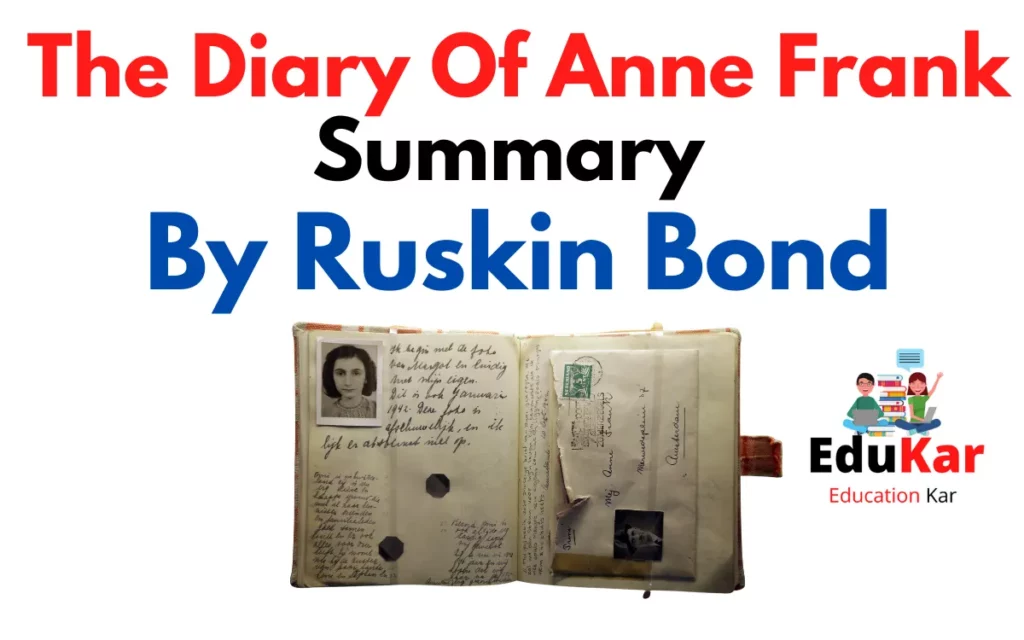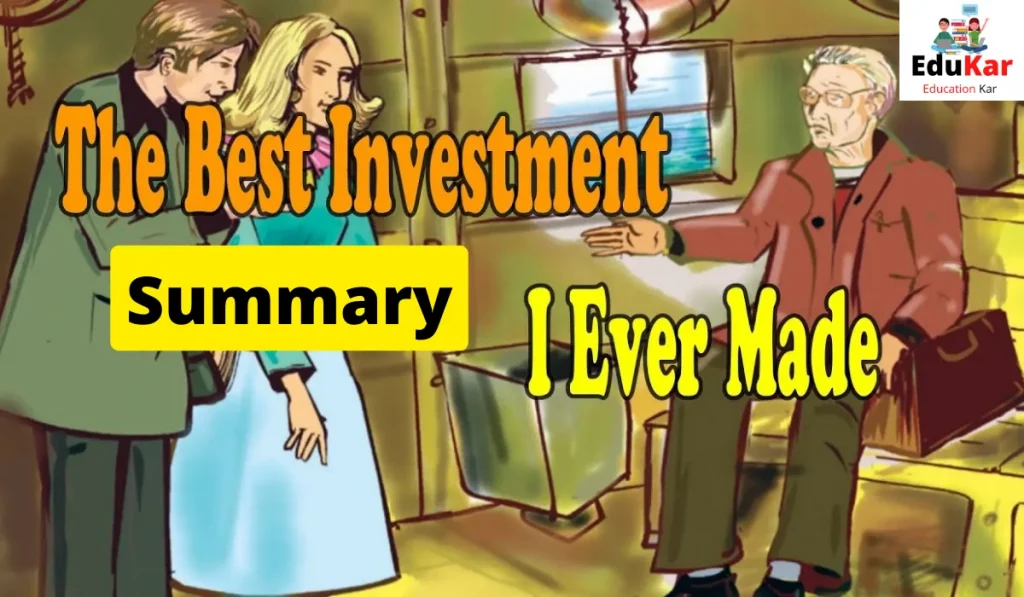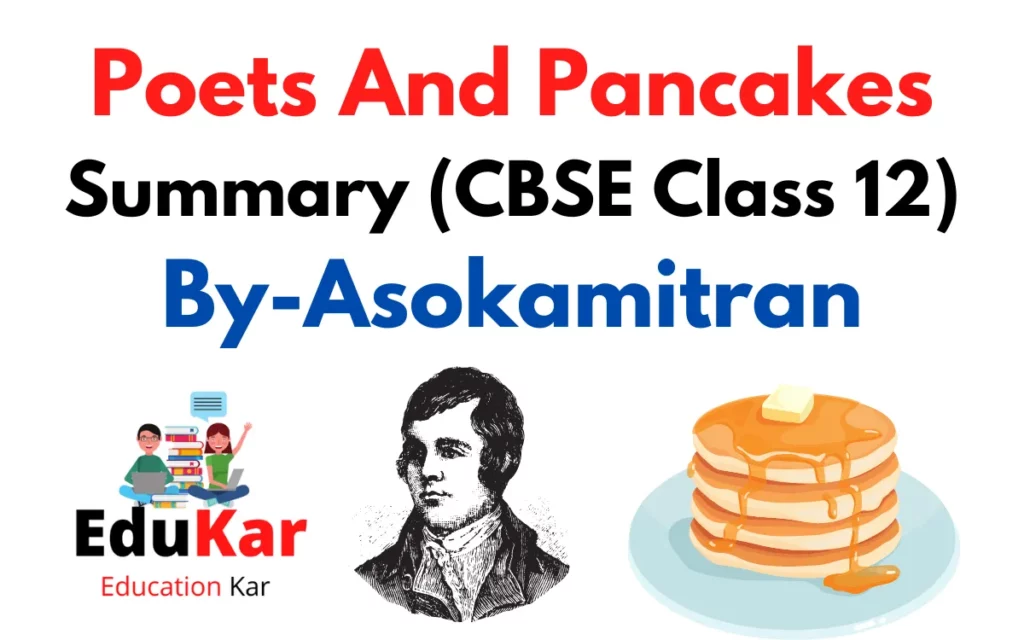Contents

| Name | Indigo |
| Subject | English |
| Class | 12th |
| Board | CBSE |
| Type | Poem |
| Author | Louis Fischer |
Introduction
The summary recounts Louis Fischer’s meeting with Mahatma Gandhi in 1942, during which Gandhi shared his experience of initiating the departure of the British from India. Specifically, he recounted his involvement in the Champaran Satyagraha of 1917, which was a significant event in India’s struggle for independence. The summary describes how Gandhi was persuaded by a sharecropper named Rajkumar Shukla to visit Champaran and help safeguard the interests of the sharecroppers. Despite facing opposition from British authorities and planters, Gandhi and his associates gathered evidence of the exploitation of the sharecroppers and helped secure their rights through nonviolent resistance. The summary highlights how this experience shaped Gandhi’s thinking and approach towards achieving India’s independence.
Character of Indigo
The most prominent character is Mahatma Gandhi, who was a leader of the Indian independence movement and a key figure in the struggle against British colonialism. He played a central role in the Champaran Satyagraha by advocating for the rights of sharecroppers and organizing nonviolent protests against British authorities and planters.
Another important character is Rajkumar Shukla, a sharecropper from Champaran who persuaded Gandhi to visit the region and help protect the interests of the sharecroppers. Shukla’s persistence and determination played a crucial role in bringing Gandhi to Champaran and initiating the Satyagraha.
There are also several other characters mentioned in the summary who supported Gandhi in his efforts to help the sharecroppers. These include lawyer Rajendra Prasad, who provided Gandhi with valuable legal advice, and a group of lawyers who joined Gandhi’s struggle and even agreed to go to jail to help the poor peasants. Volunteers like Mahadev Desai, Narhari Parikh, and Gandhi’s son, Devdas, also played an important role in running schools in Champaran villages and teaching the peasants.
Finally, there are the British authorities and planters who opposed Gandhi’s efforts and tried to prevent him from gathering evidence of the exploitation of the sharecroppers. Despite their opposition, Gandhi and his associates were able to gather enough evidence to expose the exploitation and secure the rights of the peasants.
Indigo-Summary
Louis Fischer met Gandhi in 1942 at his ashram in Sevagram, where Gandhi shared his experience of initiating the departure of the British from India. Gandhi recalled his visit to Champaran in 1917, at the request of Rajkumar Shukla, a sharecropper who sought his help in safeguarding the interests of the sharecroppers. Initially, Gandhi was too busy to visit Champaran, but Shukla’s persistence impressed him, and he promised to visit Champaran after his trip to Calcutta.
In Calcutta, Shukla met Gandhi and took him along to Champaran. Gandhi wanted to help the sharecroppers who were oppressed by the system of indigo cultivation. As per the contract, 15 percent of the peasant’s landholding was to be reserved for the cultivation of indigo, the crop of which was given to the landlord as rent. This system was very oppressive, and Gandhi wanted to help the sharecroppers.
Gandhi visited the British landlord association but was not given any information because he was an outsider. He then went to the commissioner of the Tirhut division who threatened Gandhi and asked him to leave Tirhut. Instead of returning, he went to Motihari, where he started gathering complete information about the indigo contract. One day, as he was on his way to meet a peasant who was maltreated by the indigo planters, he was stopped by the police superintendent’s messenger who served him a notice asking him to leave. Gandhi received the notice but disobeyed the order. A case was filed against him, and many lawyers came to advise him. But when he stressed, they all joined his struggle and even consented to go to jail in order to help the poor peasants.
On the day of the trial, a large crowd gathered near the court. It became impossible to handle them. Gandhi helped the officers to control the crowd. Gandhi gave his statement that he was not a lawbreaker but he disobeyed so that he could help the peasants. He was granted bail, and later on, the case against him was dropped. Gandhi and his associates started gathering all sorts of information related to the indigo contract and its misuse.
Later, a commission was set up to look into the matter. After the inquiry was conducted, the planters were found guilty and were asked to pay back to the peasants. Gandhi accepted their offer to pay only 25 percent of the amount because he wanted to free the sharecroppers from the binding of the indigo contract.
Gandhi opened six schools in Champaran villages, and volunteers like Mahadev Desai, Narhari Parikh, and his son, Devdas taught them. Kasturbai, the wife of Gandhi used to teach personal hygiene. Later on, with the help of a volunteer doctor, he provided medical facilities to the natives of Champaran, thus making their life a bit better.
A peacemaker, Andrews, wanted to volunteer at Champaran ashram. But Gandhi refused as he wanted Indians to learn the lesson of self-reliance so that they would not depend on others. Gandhi told the writer that it was Champaran’s incident that made him think that he did not need the Britisher’s advice while he was in his own country.
Indigo-Theme
The primary theme of the Champaran Satyagraha, as depicted in the summary, is the struggle for justice and equality in the face of colonial oppression. The sharecroppers in Champaran were being exploited by British planters who forced them to grow indigo and give up a large portion of their land for its cultivation. Mahatma Gandhi, inspired by the plight of the sharecroppers, initiated a nonviolent protest movement to challenge this unjust system and secure their rights. The Champaran Satyagraha thus highlights the themes of resistance, sacrifice, and the power of nonviolent action in the pursuit of justice and freedom.
About The Author
Louis Fischer was an American author and journalist known for his writing on political and historical subjects. He is the author of “Indigo”, a novel set in late 1800s India exploring the lives of those impacted by the indigo trade. Through his vivid writing and insightful perspectives, Fischer provides a nuanced and complex look at the world and the forces shaping it. A celebrated writer, his works continue to captivate and inspire readers today.
Conclusion
In conclusion, Mahatma Gandhi’s involvement in the Champaran Satyagraha of 1917 marked a significant milestone in India’s struggle for independence. Through nonviolent resistance and civil disobedience, Gandhi and his associates gathered evidence of the exploitation of sharecroppers by British landlords and secured their rights. This experience not only helped improve the lives of the peasants in Champaran but also shaped Gandhi’s thinking and approach towards achieving India’s independence. By refusing to accept the status quo and standing up against injustice, Gandhi set an example of how peaceful resistance can bring about positive change in society. His legacy continues to inspire people around the world to fight for their rights and freedoms using nonviolent means.
FAQs:
What is “Indigo” by Louis Fischer about?
“Indigo” is a book written by Louis Fischer that is a comprehensive summary of the history and culture of the indigo plant and its use as a dye. The book covers the origins of indigo dyeing, its spread across the world, and its importance in various cultures.
Is “Indigo” a fiction or non-fiction book?
“Indigo” is a non-fiction book, written by Louis Fischer as a comprehensive history and cultural summary of the indigo plant and its use as a dye.
What kind of information can be found in “Indigo”?
“Indigo” covers a wide range of information about the indigo plant and its use as a dye, including its history, cultural significance, production methods, and various uses in different parts of the world. The book also provides a comprehensive overview of the economic and political implications of the indigo trade.




![Grandma Climbs A Tree Summary [Class 10] By Ruskin Bond Grandma Climbs A Tree Summary](https://edukar.in/wp-content/uploads/2022/09/Grandma-Climbs-A-Tree-Summary-1024x597.webp)


![The Old Man And The Sea Summary [Novel by Ernest Hemingway] The Old Man And The Sea Summary Novel by Ernest Hemingway](https://edukar.in/wp-content/uploads/2023/02/The-Old-Man-And-The-Sea-Summary-Novel-by-Ernest-Hemingway-1024x640.webp)








